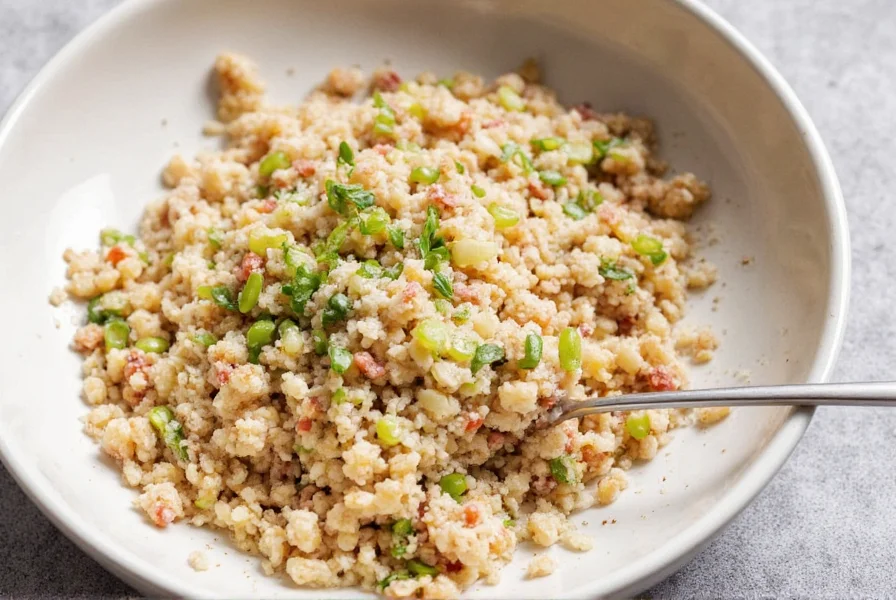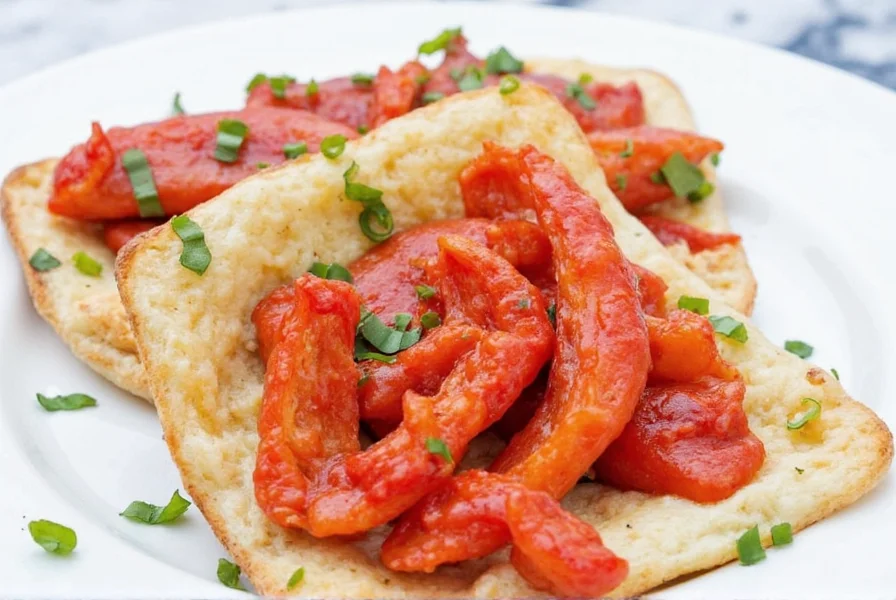Why Seasoning Isn't Just for Sprinkling
When you think of seasoning, the first image that comes to mind might be someone lightly shaking salt over pasta or sprinkling paprika on grilled chicken. While those are classic moves, seasoning is far more versatile than we often give it credit for. In fact, the way you choose to season your dishes can completely transform the flavor profile of your meal.
In this article, we'll explore creative and effective ways to incorporate seasoning into your cooking beyond the typical shake-and-sprinkle method. Whether you're an enthusiastic home cook or a seasoned pro, these tips will help you get the most out of your spice rack and truly elevate your culinary creations.
Tip #1: Dry Rubs for Maximum Flavor Impact
If you're grilling meat or roasting vegetables, a dry rub is your secret weapon. By combining salt, pepper, smoked paprika, garlic powder, and other spices, you create a flavor-packed crust that seals in moisture while delivering bold taste.
Pro Tip: Let your meat sit with the dry rub for at least 30 minutes before cooking to allow the flavors to penetrate deeper.
Tip #2: Make Your Own Spice Blends at Home
Pre-made spice blends like Cajun seasoning or za'atar are great, but homemade mixes take your cooking to another level. You control the ratios, avoid preservatives, and tailor the blend to your personal preferences.
Try This Blend:
- 2 tbsp smoked paprika
- 1 tbsp cumin
- 1 tsp chili powder
- ½ tsp garlic powder
- ½ tsp onion powder
- Salt to taste
Mix well and store in an airtight container. Use on grilled meats, roasted veggies, or even popcorn!
Tip #3: Infuse Oils and Butters with Seasonings
Infused oils and flavored butters can instantly upgrade any dish. Whether you're sautéing garlic shrimp or tossing fresh bread rolls, a touch of infused oil adds depth and richness.
| Oil Type | Ideal Pairing | Best For |
|---|---|---|
| Olive Oil | Garlic, rosemary, chili flakes | Pasta, salad dressings |
| Coconut Oil | Lemongrass, ginger, turmeric | Stir-fries, curries |
| Butter | Thyme, lemon zest, sea salt | Steak, corn, potatoes |
Tip #4: Use Seasonings in Desserts? Yes, Please!
Think cinnamon in chocolate cake, cardamom in cookies, or chili in brownies. Using savory seasonings in desserts can open up exciting flavor dimensions that surprise and delight your palate.
Try These Unusual Combos:
- Cinnamon + Coffee Cake
- Nutmeg + Apple Pie
- Pink Himalayan Salt + Dark Chocolate Truffles
- Cardamom + Pistachio Ice Cream
Tip #5: Brine Meats with Spices for Juicier Results
Brining isn't just about keeping meats moist — it's also a perfect opportunity to infuse them with intense flavor. A spiced brine made with salt, sugar, black peppercorns, bay leaves, and citrus zest can transform a simple roast chicken into a showstopper.

Brine Recipe:
- 1 gallon water
- ½ cup salt
- ¼ cup brown sugar
- 2 bay leaves
- 1 tbsp whole black peppercorns
- 2 cloves garlic
- 1 orange, sliced
Submerge chicken in the brine for 4–8 hours before roasting or grilling.
Tip #6: Toast Whole Spices Before Grinding
Toasted spices release their essential oils, enhancing aroma and flavor. Simply heat a dry skillet and toast whole spices like cumin seeds, coriander seeds, or mustard seeds until fragrant. Then grind them for a richer, more robust seasoning base.

This step makes a huge difference in dishes like curry powders, mole sauces, or spice-laden stews.
Tip #7: Marinate Vegetables with Bold Flavors
Veggies often play second fiddle to meat, but they deserve some seasoning love too. A spiced marinade can make zucchini, eggplant, or mushrooms shine as the main event.
Vegetable Marinade Example:
- 3 tbsp olive oil
- 1 tbsp balsamic vinegar
- 1 tsp smoked paprika
- ½ tsp cumin
- Crushed garlic clove
- Fresh herbs (rosemary or thyme)
Toss vegetables in the marinade and let sit for 30 minutes before roasting or grilling.
Frequently Asked Questions About Seasoning
What does "seasoning" actually mean in cooking?
"Seasoning" refers to the process of enhancing food flavors using spices, herbs, salts, and other flavor enhancers. It involves strategic integration of ingredients throughout the cooking process rather than just a final sprinkle, including techniques like dry rubs, infusing oils, making custom blends, and toasting spices to maximize flavor development.
How is proper seasoning different from just adding salt and pepper?
Proper seasoning involves layering flavors at different cooking stages, creating complex spice blends, and allowing time for flavors to meld. It goes beyond a simple salt-and-pepper finish by considering how each ingredient interacts with others to build depth, balance, and complexity in the dish.
Can I really use savory seasonings in desserts?
Absolutely! Savory seasonings can add remarkable depth to desserts. Cinnamon, nutmeg, and cardamom are classic in baked goods, but more adventurous options like pink Himalayan salt in chocolate truffles or a pinch of chili powder in brownies can create exciting flavor contrasts. The key is using these seasonings in small amounts to enhance rather than overwhelm the sweet elements.
How long should I let a dry rub sit on meat before cooking?
For optimal flavor penetration, let your dry rub sit on meat for at least 30 minutes at room temperature before cooking. For even better results, refrigerate the seasoned meat for 2-24 hours. The longer time allows the salt to break down proteins and the spices to infuse deeper into the meat. Note that very acidic components might "cook" delicate proteins like fish if left too long.
Do I really need to toast whole spices before grinding them?
Toasting whole spices before grinding makes a significant difference in flavor intensity. The dry heat releases essential oils and enhances the aromatic compounds, resulting in spices that are noticeably more fragrant and flavorful. While pre-ground spices are convenient, freshly toasted and ground spices offer superior flavor that can transform your dishes. The difference is particularly noticeable in spice-heavy dishes like curries and stews.
How can I tell if my spices are still fresh enough to use?
Fresh spices should have vibrant color and strong aroma. To test freshness, rub a small amount between your fingers and smell it. If the scent is weak or musty, it's time to replace them. Whole spices generally stay fresh for 2-4 years, while ground spices last 6 months to 2 years. Store spices in airtight containers away from heat and light to maximize their shelf life. For the best flavor, consider buying smaller quantities more frequently and toasting whole spices just before use.
Buying Guide: What to Look for When Choosing Seasonings
Not all seasonings are created equal. Here's how to choose the best ones for your kitchen:
| Feature | Description | Benefit |
|---|---|---|
| Whole vs Ground | Whole spices last longer and retain flavor better; grinding right before use enhances potency. | Superior flavor retention and versatility. |
| Packaging | Airtight containers protect from moisture and light, preserving freshness. | Longer shelf life and consistent quality. |
| Organic Options | Free from artificial additives and pesticides. | Healthier and more environmentally friendly. |
| Single-Origin Spices | From specific regions known for superior quality (e.g., Madras curry powder, Kashmiri chili). | More authentic flavor profiles. |
Recommended Products:
- The Spice Garden - Smoked Paprika Jar: Perfect for rubs and marinades. Ideal for BBQ lovers.
- Kalustyan's Organic Cumin Seeds: Great for toasting and grinding. Suitable for Indian and Middle Eastern cuisines.
- Penzeys Spices – Old World Allspice: Versatile for both sweet and savory dishes. Excellent for baking and stews.
- La Flor Chili Powder: Rich, smoky, and complex. Best for Tex-Mex dishes and chili con carne.
- Mrs. Dash Original Blend: A low-sodium alternative for health-conscious cooks.
Conclusion: Elevate Your Dishes with Proper Seasoning Techniques
Seasoning is not just about adding salt or pepper at the end. It's a dynamic culinary process that involves infusion, layering, and thoughtful application. From dry rubs to dessert enhancements, there are endless ways to bring new life to your meals.
Next time you reach for your spice cabinet, don't just sprinkle — experiment! With these seven expert methods, you'll not only enhance your food but also unlock a world of flavor possibilities.










 浙公网安备
33010002000092号
浙公网安备
33010002000092号 浙B2-20120091-4
浙B2-20120091-4